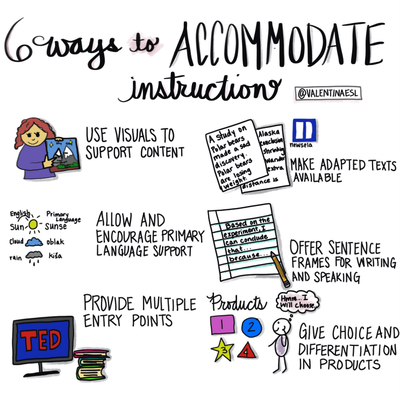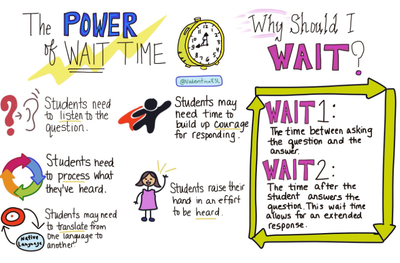Supporting Students and Teachers as a Paraprofessional ESL Educator: 6 Things You Can Try Now9/22/2018 No matter what you call them, paraprofessionals are often the school's unsung heroes. Paraprofessional educators truly serve more than students. They serve the teachers on the campus as well. They have one of the most challenging jobs. If you are a paraprofessional educator reading this article, let me commend you. You do so much for so many people. If are a teacher reading this, thank your paraprofessionals. Give them some extra love. And pass this article along to them so they can grow in their craft. I wrote this because as a professional development specialist and one who works alongside schools, I recognized that there is little out there written specifically for paraprofessional educators. The need is clear. So this is for you, our amazing educational support professionals. Over the years, I have worked with many paraprofessionals and learned from each of them. Each one had their strengths. Several had either been certified teachers themselves who didn't want the extra responsibilities of a teacher and therefore took on the paraprofessional role, or were in the midst of becoming teacher certified. No matter their own educational experiences, they were each dedicated to students and teachers. And that's what makes the difference. The roles of paraprofessionals who work with English Learners are many. But here are six. What might you add? 1. Build relationships with the teachers you work with. Get to know them personally and professionally. Personally, meaning ask questions about their life. Do they have a partner, kids, what do they do in their free time? Professionally, meaning ask about their classroom management style. How do they prefer that students talk in the classroom, what are the expectations for classwork, restroom breaks, etc. ? Ask about your role in the room. Does the teacher want you to work with small groups during independent application time? Is there an area in the room where you can work with students without removing anyone from the classroom environment? Will there be a folder, binder, or spiral where the two of you can journal notes quickly back and forth to one another? Or will you collaborate online via google docs? 2. Know who the English learners are. Get a list of the English learners that you will be working with. Find out any important information about their language level, background, and academic history. These will not be the only students you work with, but they are your focus. We don't want to stigmatize English learners by singling them out in class. However it's important to identify them so that you can help to grow their language and academic success. You will also want to secure a list of accommodations that your students might benefit from. Knowing their language level and accommodations will help you support their language and academic success. 3. Get to know your students. Beyond their permanent record folder, get to know them individually as little humans. Start by introducing yourself and letting them know that you are there to support them. Ask them questions about their hobbies and passions. This will help you to connect them with books that they might enjoy and writing topics that could help them advance in writing. Students learn more readily and at a faster rate from people who care about them. When our kids believe that we really care about who they are as people, they want to learn from us. 4. Implement strategies that support English learners. When working with students who are learning a new language, it's helpful to give them support if they need it. For example, the use of visuals is highly powerful for all learners. If you know in advance the topic of instruction, you can prepare visuals that support learning. Visuals are also great for labeling and promote vocabulary development. Once the visuals are labeled, the labels can be used as work banks. Other supports include: sentence stems for speaking and writing, modeling expectations, using primary language when possible, and using gestures. Each of these has its benefits for students who need them. The important thing to know is when a student needs the support and when to release the support. Some of the graphics below can give you tips and advice about working with English learners. But if you crave more knowledge, seek it! Read more from this blog or professional books on language acquisition. The more you learn, the better off your students will be too. Everyone benefits. 5. Be an advocate for your students.
When you notice something or think something is questionable, ask. Talk with your supervisor or the teacher you work with. If you think your English learner needs enrichment, gifted services, etc. or if you have questions, be a voice. Remember that you always have someone to talk with regarding the students and teachers you serve. Be mindful that conversations we have about students should always be confidential so remember to hold them in privacy. 6. Celebrate successes big and small. When you witness growth or you see improvement, put a spotlight on it! Share with the students you serve that they are growing and that growth takes effort and time. Share with other educators the successes of the students. Shine the spotlight on English learners. These students do not need fixing, they are exceptional! They are future global leaders. They will hopefully be bilingual adults and that's a bonus in my book! Thank you for the "heart" work you pour into students everyday. If you are a paraprofessional reading this, please comment and share your thoughts. And if you're a teacher who works with paraprofessionals, what would you add?
5 Comments
Jennifer A Catlin-Hirt
2/12/2019 09:44:23 am
Is there an email list for your blog? Don't see a place to sign up.
Reply
Li Li Lin
10/10/2020 10:21:40 am
First, thank you for an inspiring article post. I am a retired world language teacher and second language learner myself.
Reply
Thank you so much for your contribution to education. I can feel your passion and I love it! It’s truly amazing the work paraprofessionals have on their plates. As a paraprofessional, it may not be possible to know all of the content areas especially when working with 14 different classes. But what you may be able to do is support students by providing them with visuals, sentence stems, and first language support.
Reply
Cindy
3/6/2021 02:11:01 pm
Thanks for all the helpful information!
Reply
Marcelina Peterson
3/6/2021 02:12:37 pm
Thanks for all the good information.
Reply
Your comment will be posted after it is approved.
Leave a Reply. |
Categories
All
|






 RSS Feed
RSS Feed
